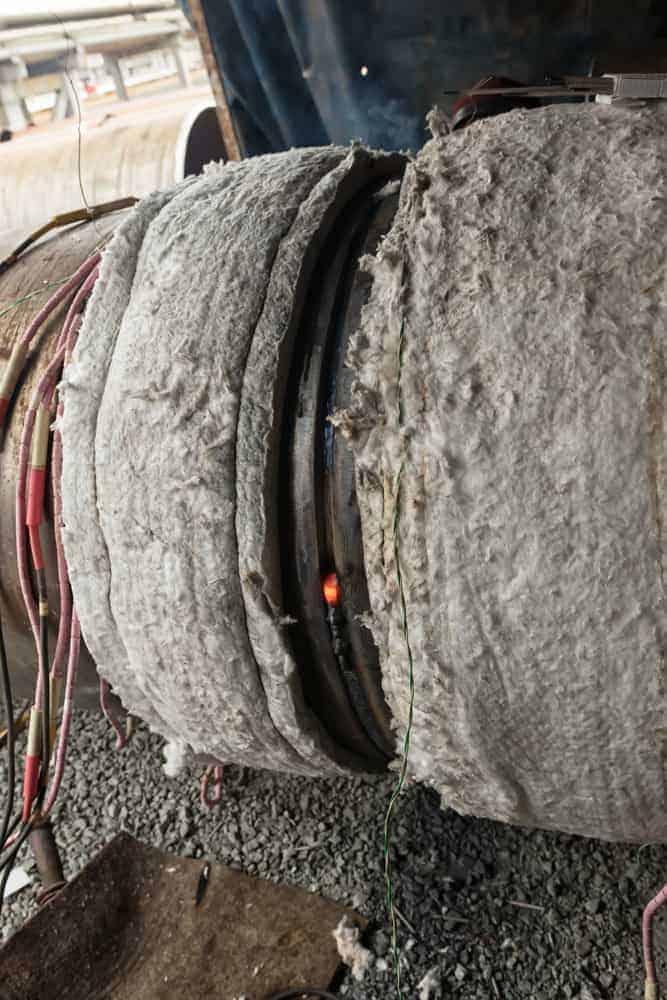
Cladding and overlay are commonly used terms in welding. In manufacturing, the cladding and overlay processes are implemented to enhance the strength of pipe, tubes, or similar components being fused. Because the terms are similar, however, they are often used interchangeably. This article will discuss the difference between the cladding and overlay processes and explore the specific uses of each.
Difference Between Cladding and Overlay
To better understand the differences, let’s first define the cladding and the overlay processes.
What Is Cladding?
Cladding is a method of depositing surface material to the base metal by welding fusion or other mechanical processes. This can be accomplished with different techniques, such as roll bonding, explosion bonding, or powder metallurgy. Pressure and temperature play important roles in the deposition when using these cladding methods. The process can be used for any type of pipes, tubes, metal sheets, or equipment with an ideal metal surface. The cladding process aims to:
- Improve the temperature and corrosion resistance of the component.
- Improve the stress and impact resistance of the component.
- Prevent the wear and tear of the component.
The Overlay Process
Through the weld overlay process, the base metal surface is covered with one or more additional metals. As a result, the base metal is protected from deterioration when exposed to a corrosive environment. Although different arc welding methods can be used to perform the overlay, it is important to consider the compatibility of the overlaying metal with that of the base metal. Important reasons for weld overlay include:
- Improving corrosion resistance and other beneficial properties of the base metal.
- Improving the service life of the component.
With such similar processes, it is easy to see why the terms often are used interchangeably. The following table focuses specifically on the difference between cladding and overlay:
| Cladding | Overlay |
|---|---|
| The cladding process may use either fusion welding or other mechanical methods to deposit a layer over the base metal. | Overlay strictly uses the fusion welding method to deposit the layer of metal over the base metal. |
| Methods can include hot rolling, explosion welding, or powder metallurgy. | Methods can include gas tungsten arc welding (GTAW), gas metal arc welding (GMAW), shielded metal arc welding (SMAW), or other arc welding processes. |
| Cladding aims to deposit a layer of high-strength material over the base metal to improve the material strength. | Weld overlay fuses the wear-resistant metal to improve the properties of the base metal. |
| Cladding can also be performed using dissimilar metals. | Usually, the metal with similar properties is added to the base metal. |
| Cladding is usually performed on parts of products that haven’t been completely finished. | The overlay is usually applied to the final finished product. |
AMI’s Solutions for Cladding and Overlay
Whether you need to perform overlay or cladding for piping, tubing, or other applications, there are different solutions to assist you in the process. AMI offers a wide range of weld heads, such as AMI Model 43 and AMI Model 2—for ID and OD cladding, respectively. Orbital TIG welding machines can assist in producing an overlay that can be enhanced with the use of a remote pendant and monitoring system to control the parameters.
By understanding the difference between cladding and overlay, you can choose the right equipment for your process. With AMI’s TIG welding, cladding, and overlaying equipment, you can expect strong, high-quality welds resistant to corrosion and abrasion.
Arc Machines, Inc. is the leader in GTAW orbital welding. We provide pipe cladding and overlaying solutions that take into consideration the difference between cladding and overlay. Contact us to identify the right solution for your needs. For inquiries regarding products, contact sales@arcmachines.com. For service inquiries, contact service@arcmachines.com.




